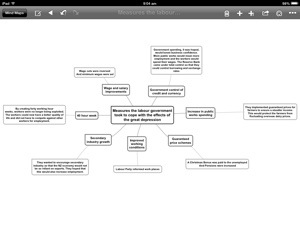For New Zealand, the early 1930s was the most shattering economic experience. Exports fell by 45 per cent in two years, national income by 40 per cent in three. The balance of payments was further weakened by the burden of interest on the overseas debt. At the worst point of the depression, the number of unemployed had exceeded to 80,000 unemployed (total population 1.5 million). Prices for exports fell sharply in 1929. (Our main exports were wool, butter, cheese and meat.) It effected people for example living standards had dropped, poverty riots and starvation had increased. Emigration increased. Birth and marriage rates had decreased. The male suicide rates were increasing.
Category Archives: History
New Zealand and the Welfare State
•What is poverty – it means being poor, millions of people are subjected to poverty
•Who is to blame for poverty – people and countries, because if people didn’t waste there money on not important thing, like weapons and makeup ect all that money could go towards the people in poverty.
•Should society/government take responsibility for the poor – yes because lots of the things they spend there money on isn’t that important and a waste so if they gave it to countries with poverty lots of lives would be saved. They need the help of others eg society and governments because they have no way on getting out?
Definitions –
•Poverty – being very poor
•Casual Labour – where a worker is employed when needed, they don’t have a particular schedule
•Sweated Trades – workers work for long hours, for barely any money and poor conditions
•Social reformers – they are people who try to solve social problems
•Universal support –
•Welfare State – a system whereby the state undertakes to protect the health and well-being of its citizens, especially those in financial or social need, by means of grants, pensions, and other benefits
What did New Zealand do to improve the lives of the poor before 1935
•they were the first country to supply a state-funded old age pension
•In 1924, pensions were instituted for the blind
Explain how fair and effective you think it’s actions were
•it wasn’t really fair because it strongly discriminated against those considered to be ‘the undeserving poor’. For example, anyone who had been convicted of criminal or drunken offences more than twice within the seven years before applying for the pension were not eligible. So it’s effectiveness made it so there was a difference between people 1 being deserving and the other undeserving.
Should New Zealand be proud of what it did to help the poor before 1935? Give at least one reason to support your thoughts.
•No because they barely did anything the only thing they did was give out a pension to old people and widows (mainly with children) but they weren’t the only people who were poor.
Trench Warfare
Use this source to create a detailed description of what it was like to live, fight and die in the trenches of World War I.
How useful is this film clip?
How reliable is this film clip as a source?
From these sources you could tell that the World War I trenches were Small spaced, crammed and narrow, dirty and muddy to live in, when it rained the water couldn’t go anywhere so they got flooded, since they are not closed in it would of gotten quite cold and it doesn’t look like they had much warmth there, when fighting it would of been dangerous with bits of barbed wire lying around and bullets flying around, when people died it would of been hard to bury them because there wasn’t that much room so the stench of a dead body would be floating round the trenches. All soldiers are wearing the same uniforms, they all look the same. The film showed how not everyone were happy to go to war and how fighting caused them to make sacrifices which weren’t always the right ones, it showed how sad it was to live there because you would see your friends die and others die around you.
The film clip was of some use to me as it shows you some ideas on what it was like to live, fight and die in the trenches of World War I. The photographs are really useful as they are actual photos of the trenches from the war so it gives you an insight to what they were like, so you don’t have to guess. This poster is not very useful as it doesn’t tell you much about the trenches and i don’t really understand it. The movie was of some use as it showed you an idea on what it was like to be in the war and how terrifying it was, but since it’s a film it could of been mocked up abit because it isn’t original, but at the end it does give you more information, with accurate information.
This film clip isn’t very reliable because it is a film, and it could of been exaggerated to make it more funny, therefore I can’t trust it. These pictures are reliable because they are original ones from the war, which war I am not sure, but I can trust it because of this. This poster is reliable because it comes from the same time as the war so it’s original and I can trust it, this source isn’t that reliable as they could of changed the picture to make the product more appealing to the people who are buying it and they are notp trying to say what the was actually like. There were some doubts of the movies reliability because since it’s a movie it not real and some parts could of been changed so I can not trust it, but it does give you a slight understanding on the lifestyle and an idea on what it was like to live, fight and die in the trenches.

